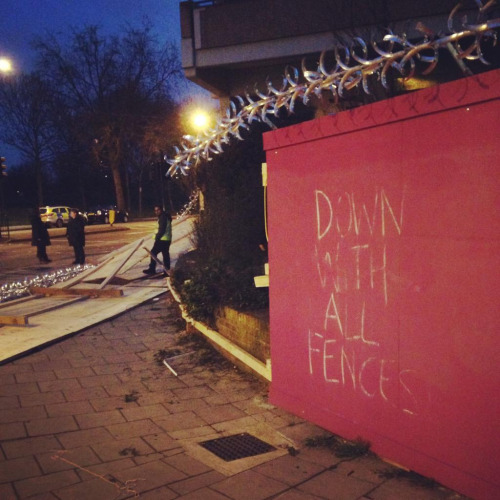
Southwark’s Labour council is London’s largest social landlord and is keen to cash in on its public assets. Located on the doorstep of the City of London, the council is conspiring with property developers to destroy large council housing estates and replace them with housing out of the reach of the working class. The Heygate Estate – 1,100 council homes – has now been flattened, and luxury flats are rising in its place. On 7 March a sales fair was held for these flats in Hong Kong. A similar fate awaits the nearby Aylesbury Estate unless residents and campaigners can build organised and powerful resistance.
The Aylesbury estate, which consisted of 2,704 council homes, is being gradually emptied and demolished. The density of housing will be doubled – from 2,700 to 4,900 homes. 2,288 will be run by housing association Notting Hill Housing Trust, with the rest up for private sale. In 2001 tenants overwhelmingly rejected a stock transfer to housing association control – turnout was 79% and 79% voted against. In contrast to this, Southwark’s Labour council was elected in 2014 with a 36.4% turnout. Labour MP Harriet Harman assured the tenants that the ballot would be respected. It was not.
Residents have been campaigning for the estate for more than 15 years. The campaign was rejuvenated on 31 January 2015, when activists occupied empty flats on the estate. The council has spared no expense in attacking, and attempting to destroy the occupation. The first occupied flat was violently evicted by 100 riot police on 17 February, with six activists assaulted by police and arrested. The occupiers moved to another empty flat, and have since occupied others. The council then spent £140,000 on building barriers around the occupied blocks, and hired 24-hour security with guard dogs. Residents remaining in these blocks must pass through locked gates to get in or out.
The council’s response shows their recognition of the potential the occupation had to grow into a powerful campaign. The huge empty blocks could have become a resident-led social centre, organising resistance against the housing crisis. Despite a small committed group of residents actively supporting the occupation, the organisation and work to mobilise local residents to lead the occupation was not undertaken. This would have been the best defence against the council’s attacks, which has justified its aggression by claiming that the squatters are ‘outside infiltrators’. However, led as it was by individualist anarchist political forces, secrecy and disorganisation prevented the occupation from taking this path.
From the outset there was hostility to media contact which isolated the protest. Open organising meetings – initially daily – were quickly deprioritised through lack of publicity and organisation, with important decisions increasingly being made in occupiers-only meetings. It was often difficult or impossible for those unable to climb a ladder to attend meetings, and improving this was not seen as an overall political priority. Despite some good protests against the local council and MP, called by the RCG, the occupation took an insular turn. The council was able to wall-in the occupiers without community resistance, thus preventing participation from growing.
The fight for the estate continues, but it is what happens outside the council’s fence which matters most. Building democracy in the campaign is essential if it is to be led by those most affected – often single mothers, disabled people, and others with barriers to participating in such an occupation. Residents have begun organising street stalls to build the campaign. A protest march, organised by Southwark Defend Council Housing, attracted 300. Building an organised and militant movement, in which anyone can play a role, is the way forward, and the RCG is committed to helping to make this happen.
Toby Harbertson
Fight Racism! Fight Imperialism! 244 April/May 2015




